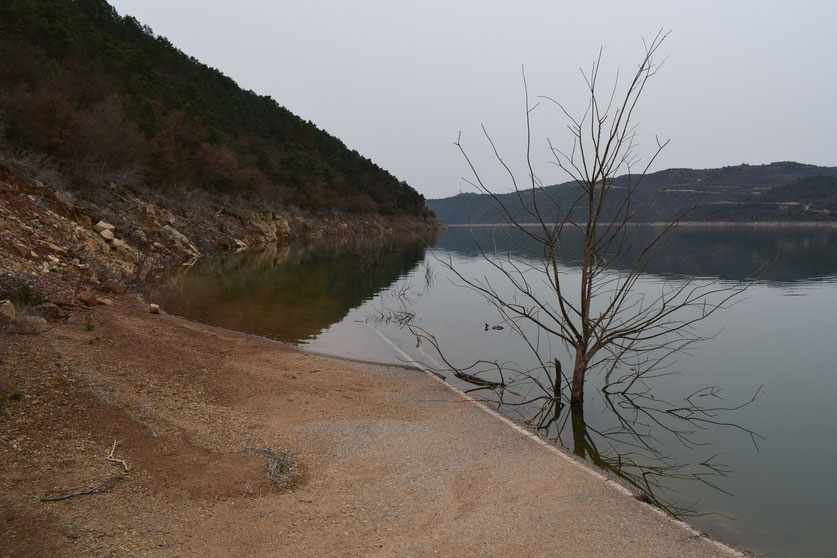
The sky was stubbornly overcast as we approached the lake. Though with all the elements of beauty; reflections of leafy trees onto the green water's surface, rocky outcrops and a silencing distance from the highway, we couldn't shake the feeling that it was a little bit too quiet down this rough track. On the map, these roads lead to nowhere. I possibly expected a picnic site or somebodies house at the point where on paper it descended to the bank in two directions, but instead we got to a sign, "PELIGRO INUNDACIONES", and it simply became impassable in the van; great hollows and troughs down a steep slope.
On foot the road disintegrates into mud clots, completely disappearing and being replaced by shrubby bushes and rocks. What at first appeared to be a chimney poking out of a small clump of trees, turned out on closer inspection to be an empty shrine, simply a window to and from nowhere without the Mary doll to stand in it. We followed a faint and precarious pathway, still twenty-five meters above the water level, around a small headland and confusingly emerged onto the remains of a two direction tarmac road; only slightly faded white lines in the centre, but edges crumbling into emptiness. Over a sinking bridge, once proud enough for an archway, metal barriers meant to protect impossible traffic, bent towards the water like discarded staples. Sloped into a disturbing width ways diagonal, as well as the simple down-hill gradient, the road plunged into the water and obscurity.



Peering gingerly over the "bank", I shrunk away from my original idea of swimming. Dead trees rose from an opaque surface, nothing but their perfect mirror images visible below. I imagined the withered bodies of lost souls lurking around the trunks; their pale willowy arms reaching towards any disturbance, willing to be remembered.
There wasn't a hint of a breeze and birds taking off, too far away to be distinguishable by eye, echoed their splashes around the valley.

Pantà de Rialb is not a lake, but a reservoir held back by a controversial dam. Though started in the sixties, it wasn't completed until the turn of the millennium, due partly to resistance from the few hundred residents who eventually had to be forcibly evicted to make way for the water. If I have understood mine and google's attempts at translation, the villages of Miralpeix, Castellnou de Bassella, Clua d'Aguilar and Aguilar de Bassella were all lost beneath the surface.


For previous legs of this journey try the UK to Switzerland, Morgins in Switzerland or France.
You might also like to read about Cerro de Pasco in Peru- the town being swallowed by a mine.